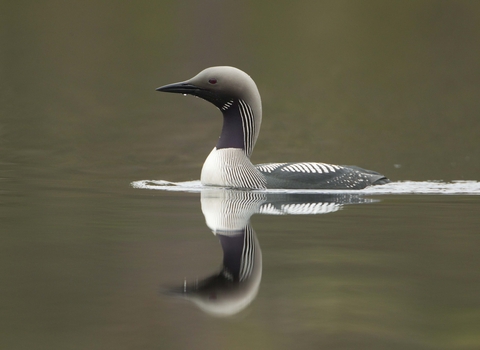
©Mark Hamblin/2020VISION
Black-throated diver
The streamlined black-throated diver is a superb swimmer and diver, but not so graceful on land! During the summer, the distinctive black patch on its throat appears, heralding the breeding season.
Scientific name
Gavia arcticaWhen to see
January to DecemberSpecies information
Category
Statistics
Length: 66cmWingspan: 1.2m
Weight: 2.3-3.4kg
Average lifespan: 12 years
Classified in the UK as Amber under the Birds of Conservation Concern 5: the Red List for Birds (2021). Protected in the UK under the Wildlife and Countryside Act, 1981. Priority Species under the UK Post-2010 Biodiversity Framework.
